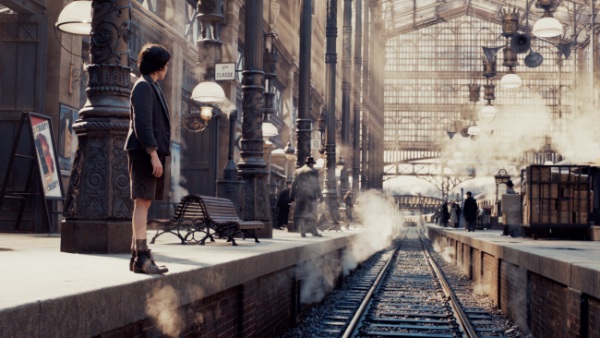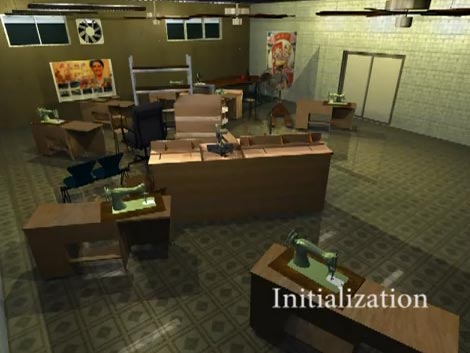(Chicago, IL) – SIGGRAPH 2010 features multiple Production Sessions that will reveal the secrets of “Avatar”, including stereoscopic filmmaking and visual effects. Two visual effects companies that contributed to the making of “Avatar”, New Zealand-based Weta Digital and U.S.-based Industrial Light & Magic, will take attendees behind the scenes and give valuable insight into the work that won three Academy Awards® for Best Cinematography, Best Visual Effects, and Best Art Direction.
“James Cameron’s epic vision of ‘Avatar’ changed the landscape for filmmaking and production,” said Terrence Masson, SIGGRAPH 2010 Conference Chair from Northeastern University. “A movie of this caliber not only has moved our industry forward light years, but it also has the potential to teach us techniques and solutions that we never would have considered.”
SIGGRAPH Production Sessions are high-level discussions that showcase how computer graphics and interactive techniques are actually designed and implemented. Attendees of all experience levels will benefit.
Here are just a few highlights of this year’s Production Sessions:
Making “Avatar”
Joe Letteri and Stephen Rosenbaum, Weta Digital; Richard Baneham, Lightstorm
“Avatar” is the first predominately digitally created film, shot and directed as a live action film. Key to the director’s vision was having photorealistic, believable digital characters and environments fit seamlessly with live action. To accomplish this, Weta Digital, led by Joe Letteri, developed innovations that enabled the director and actors work as if they were in a conventional live-action movie, even when filming sequences that were entirely computer-generated. For the audience to connect with the blue-skinned ten-foot-tall “Na’vi”, they had to see the actor’s soul shine through the character’s eyes.jumping castle This required increased realism in character animation, especially the facial animation. The emotional performances of the characters in “Avatar” are an achievement that have taken digital characters to a new level of believability and have at the same time, enhanced story telling.
Character and Environment Lighting Challenges on “Avatar”Kevin Smith, Weta Digital
This session summarizes some of the problems encountered during the “Avatar” production process and their solutions. The focus is on maintaining pipeline flexibility and enabling users to concentrate on the art of lighting instead of managing technology.
Volume Rendering for “Avatar”
Antoine Bouthors and Mark Davies, Weta Digital
How Weta Digital achieved efficient, realistic stereo rendering of volumetric elements and their integration with the compositing engine.
Compositing “Avatar”Peter Hillman, Erik Winquist, and Matthew Welford, Weta Digital
This presentation outlines some of the adaptations that Weta Digital made to its compositing pipeline to deliver “Avatar”: simplifying stereo compositing and stereo-image handling, and avoiding the need to render holdout masks to composite render layers.
A Physically Based Approach to Virtual Character Deformations
Simon Clutterbuck and James Jacobs, Weta Digital
James Cameron’s “Avatar” required the principal digital characters to be photo-realistic, full-screen, and almost fully naked in hundreds of shots. To accomplish this task, Weta Digital developed a robust character-simulation toolset that delivered the required level of realism.
Rendering “Avatar”: Spherical Harmonics in Production
Nick McKenzie, Martin Hill, and Jon Allitt, Weta Digital
This session covers the application of spherical harmonics in a production rendering environment for accelerated final-frame rendering of complex scenes and materials.
PantaRay: Directional Occlusion for Fast Cinematic Lighting of Massive Scenes
Jacopo Pantaleoni and Timo Aila, NVIDIA Research; David Luebke, NVIDIA Corporation; Luca Fascione, Martin Hill, Weta Digital
NVIDIA Research and Weta Digital present the results of a joint research collaboration, and describe the architecture of a novel ray tracing system for precomputing the sparse directional occlusion caches used as a primary lighting technology during the making of “Avatar”.
“Avatar”: Bending Rigid Bodies
Brice Criswell, Michael Lentine, and Steve Sauers, Industrial Light & Magic
This session describes the tools recently developed at Industrial Light & Magic for automatically modeling surface deformations produced during bending and denting of rigid materials.
“Avatar”: Modeling a Jungle, From Template to Film Shawn Dunn and Marco Revelant, Weta Digital
The vast and epic environments in “Avatar” presented unique technical hurdles. Weta Digital developed tools and procedures to create realistic, high-density 3D environments. This presentation explores the process and tools used in modeling and layout of these very complex environments.
Digital Water for “Avatar”Allen Hemberger, Christoph Sprenger, Diego Trazzi, and Sebastian Marino, Weta Digital
Detailed description of the full-CG stereographic water pipeline for “Avatar”, from innovative fluid simulation through a custom-designed levelset-based post-processing stage to final renders using a modular shading strategy.
An Accurate Method for Acquiring High-Resolution Skin-Displacement MapsGino Acevedo and Eugene D’Eon, Weta Digital
An efficient and precise method for acquiring skin-displacement maps is an essential component for creating an accurate appearance model for faces, hands, and skin in general.
To view all the Production Sessions that will be presented at SIGGRAPH 2010, click here.


